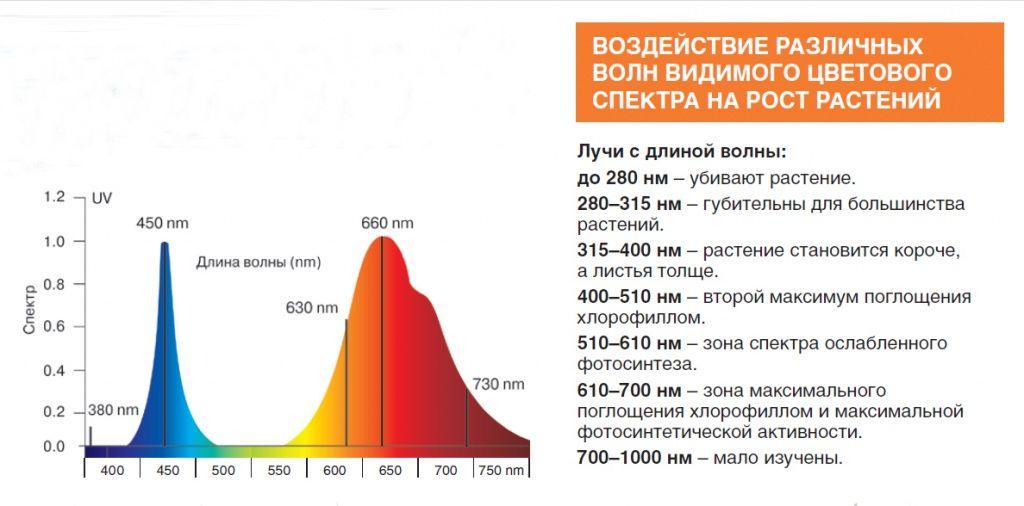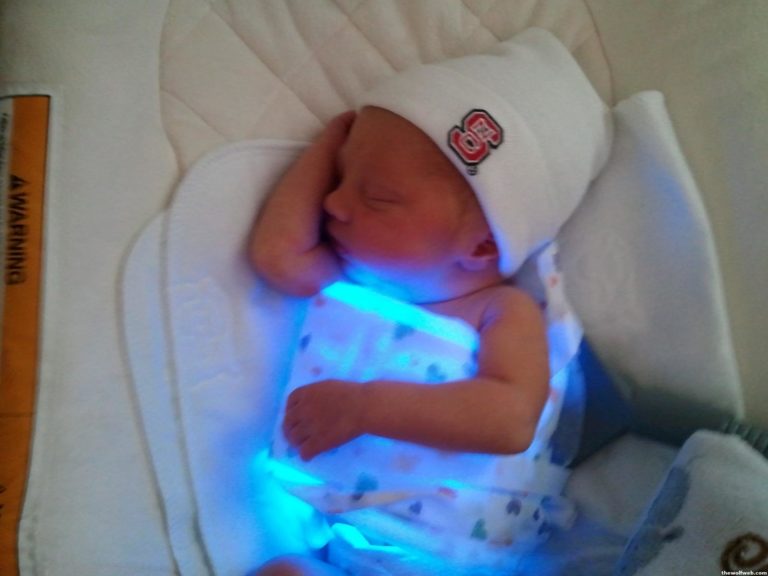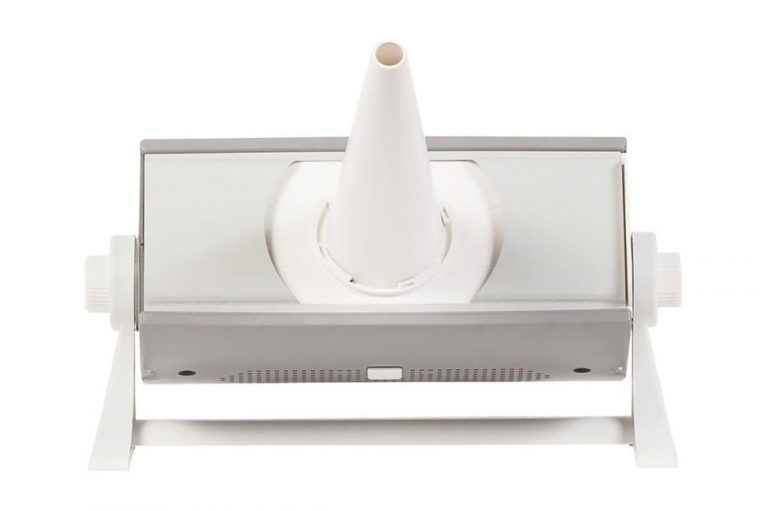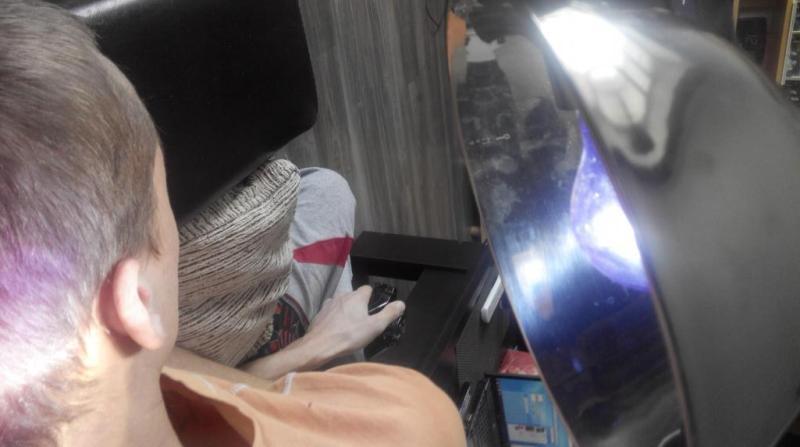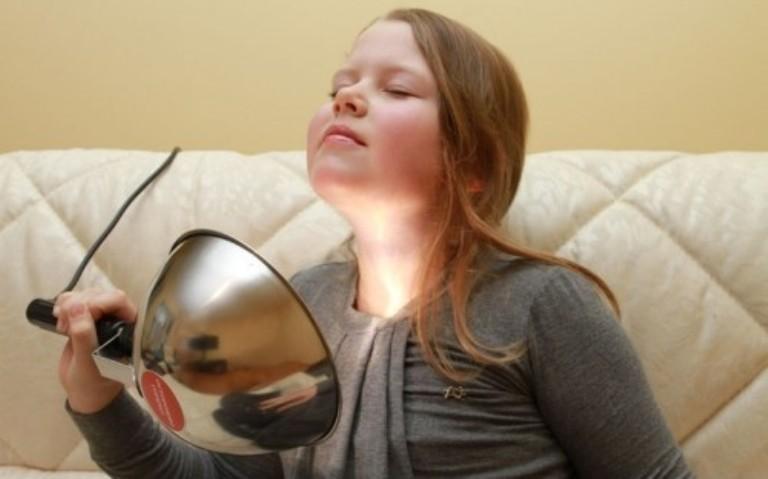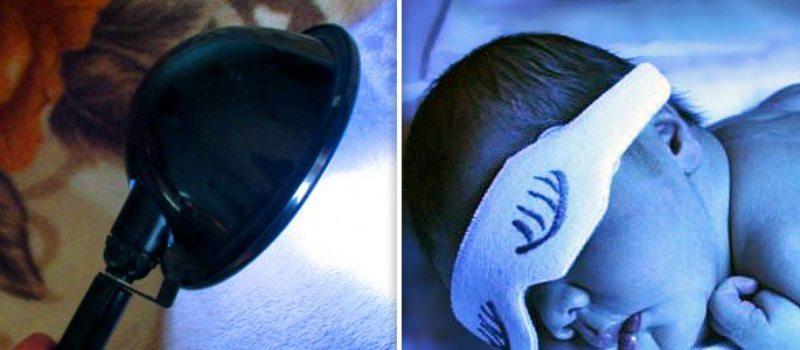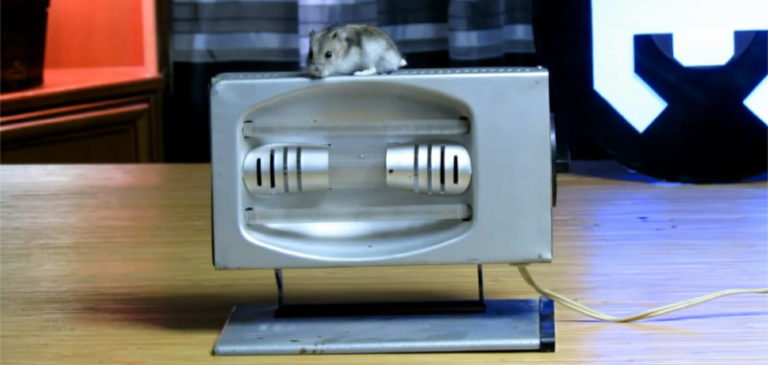Features of the blue lamp for warming
Description of the Blue Lamp
The so-called Minin lamp is a tungsten filament in a blue cobalt glass bulb of 60 watts.
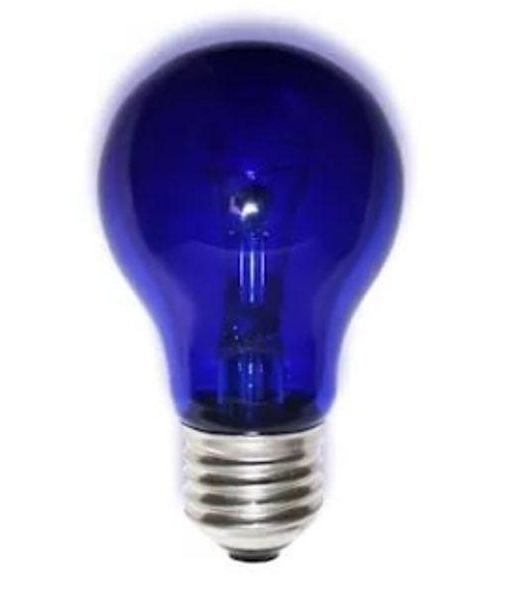
The standard E27 socket is installed in a socket mounted in a metal reflector with a handle of plastic, wood or metal. The device is simple and uncomplicated, works on 220 volts, which is connected via a cable with an electrical plug. The device received its name in 1900, thanks to the publication of a scientific paper by the Russian military doctor A. V. Minin on the subject of light therapy of injuries, neuralgia, muscle and joint pathologies accompanied by pain.
In his works, Minin pointed out that he used the work of other medical scientists - G.I. Gachkovsky and S.F. Shtein, and the design of the device was invented by physician D.A. Kessler in 1891. Nevertheless, the blue warming lamp became known in medical circles as the "Minin reflector", and this definition has remained the same until now. The peak of the device's popularity came in the days of the USSR. The Ministry of Health strongly encouraged its use in home treatment. It is known that the government reimbursed the plant for the cost of manufacturing reflectors in order to reduce their market value and increase their availability to the Soviet consumer.
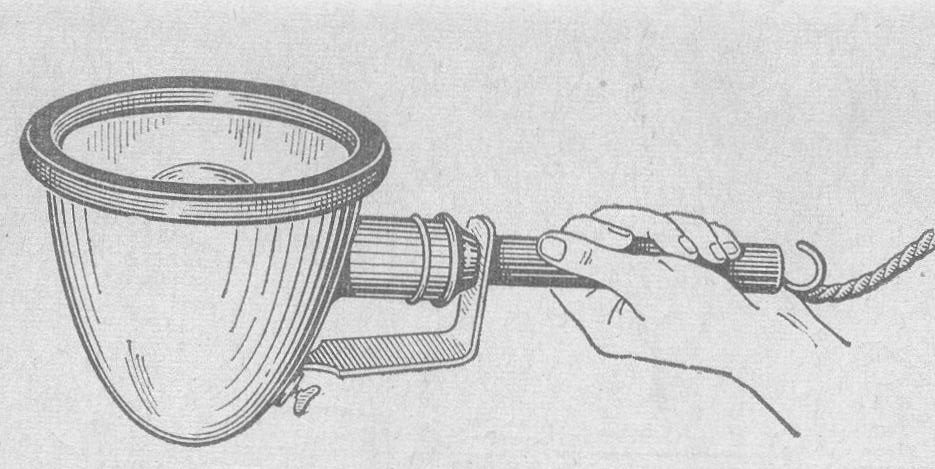
Operating Principle
The action of the device is based on the electromagnetic radiation of the infrared spectrum. According to the manufacturer's statement, the operating range of the lamp is between 780-1000 nanometers. The blue glass color was chosen for the following reasons:
- filtering of the visible spectrum of luminescence to facilitate its perception by the eyes;
- slightly deeper penetration of blue waves into the tissues;
- the therapeutic and aseptic effect of blue glow.
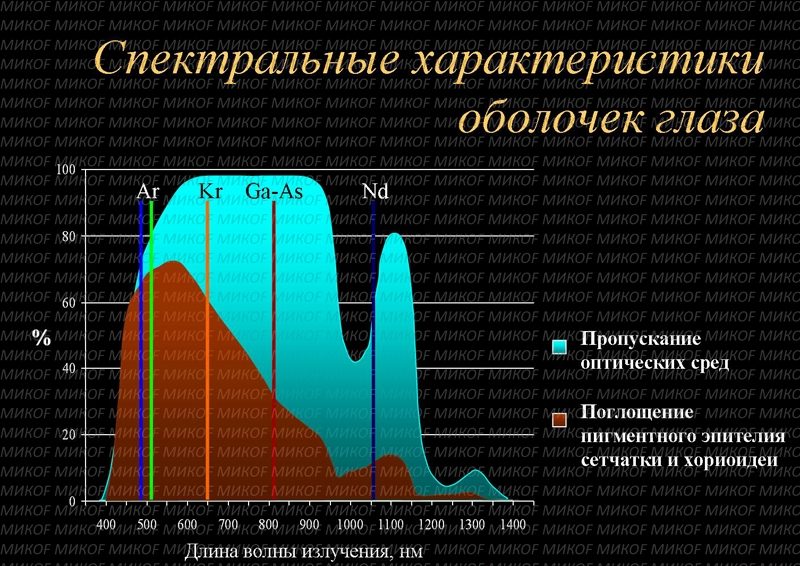
With regard to the second and third factors, there is a lot of contradictory data. If the USSR conducted studies on the effectiveness of blue light, their results to date have not been published.
Blue should not be confused with ultraviolet. The UV range is not visible to the human eye, and its spectrum does not exceed 400 nm.
The design of the lampshade works on the principle of a focusing reflector. Modern reflectors are made of stainless steel, but Soviet products were coated inside with a layer of chromium, as this metal has the best coefficient of reflection of the useful spectrum of light after silver.
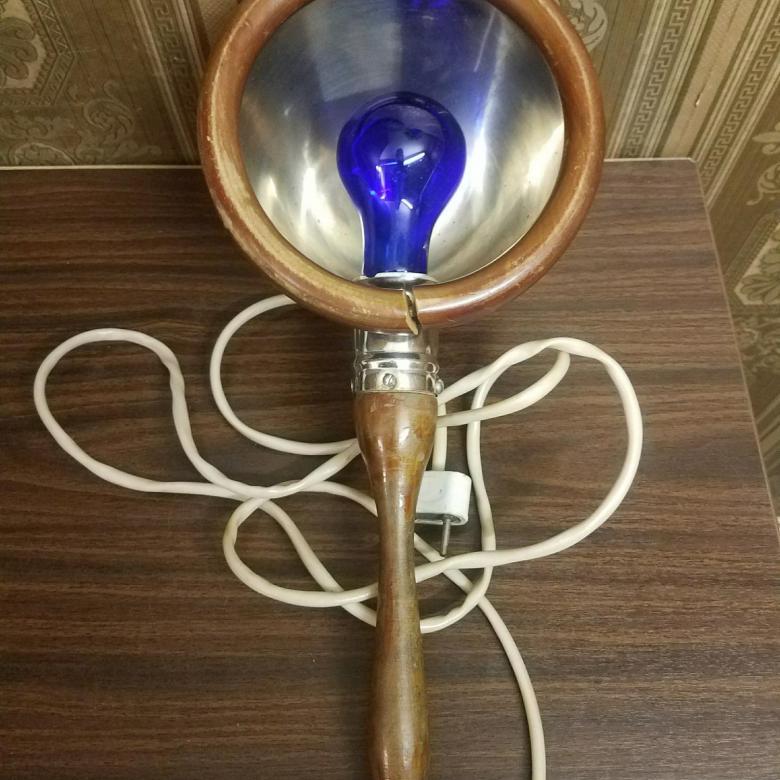
What is it used for
The Minin Reflector became one of the simplest devices authorized for treatment at home when dry heat is indicated. In particular, such pathologies and conditions as:
- Lesions of the peripheral nervous system with a pronounced pain syndrome - neuralgia, neuritis in remission;
- Diseases of the musculoskeletal system of non-infectious genesis without signs of acute inflammation - myositis, arthralgia, arthrosis, radiculitis, osteochondrosis, myalgia spastic character;
- injuries in remission - bruises, sprains, muscle pain after exertion;
- trophic ulcers, aseptic (not infected) and contaminated (no signs of suppuration) wounds in the regeneration phase;
- Diseases of internal organs in the subacute or chronic stage - sinusitis, otitis, maxillitis, epidemic parotitis, tonsillitis, bronchitis;
- Non-infectious lesions of external tissues - chalazia (barley);
- Depressive conditions, increased nervous excitability.
In the hospital it is used in the variant of the lamp Sollux for relief of complications at the burn syndrome, extensive frostbite in the proliferative stage.
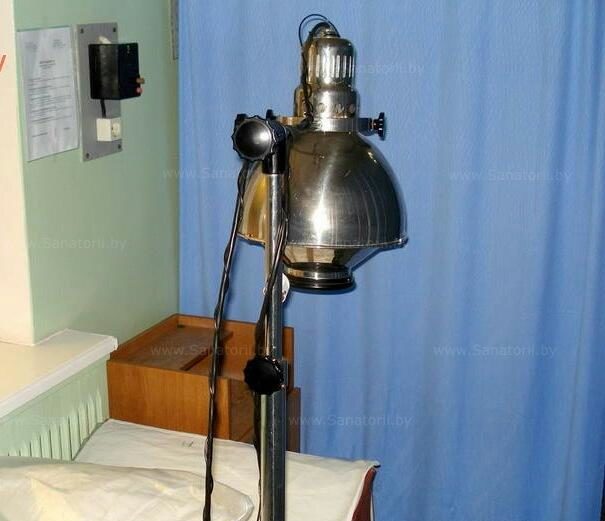
Considering that the incandescent bulb emits not only the infrared spectrum, but also the visible spectrum, including a small fraction of the blue spectrum bordering the ultraviolet, the Minin reflector is attributed some antibacterial and bacteriostatic effect.

The graph shows that the incandescent lamp has practically no UV radiation. Consequently, there is no reason to believe the presence of a pronounced antiseptic effect, the peak of which falls on the aggressive ultraviolet in the region of 254 nm. The same applies to the possibility of using the Minin reflector to treat neonatal jaundice of newborns, for the treatment of which the radiation peak must lie in the range of 400-500 nm. Regarding the prevailing opinion on the possibility of using blue light to grow plants, a graph of the susceptibility of plants to different waves of electromagnetic radiation is given.
From the data presented, it is logical to conclude that the efficiency of the lamp Minin, whose peak exposure is at 780-1000 nm, and the visible range is limited to blue, clearly insufficient for full photosynthesis.
The effect of heating
The main therapeutic factor of the Minin reflector is heat. However, it is noted that the heat from the infrared Infrared radiation affects the biological organisms in a different way than the contact heat from the warming pad, attached to the body. Under the influence of electromagnetic radiation of infrared spectrum aqueous solutions, which include biological fluids, including blood and lymph, change their structural-phase state. Infrared rays are absorbed by liquid tissue structures, enter with them in resonance, causing oscillations with release of endogenous (internal origin) heat. That is, it is not so much the lamp that heats the tissue (although this too) as the tissue releases heat, which then warms the underlying layers.
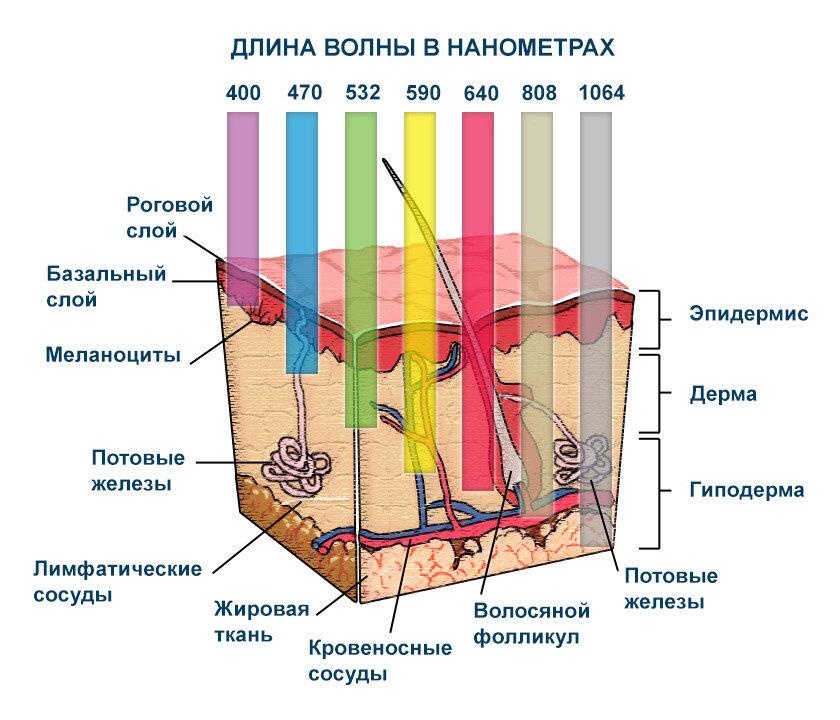
Heat from infrared radiation has localized effects:
- Increased biological activity of cells and acceleration of biochemical reactions;
- intensification of fermentation and action of glands;
- acceleration of blood flow and enhancement of blood supply;
- acceleration of cell growth and, consequently, regeneration;
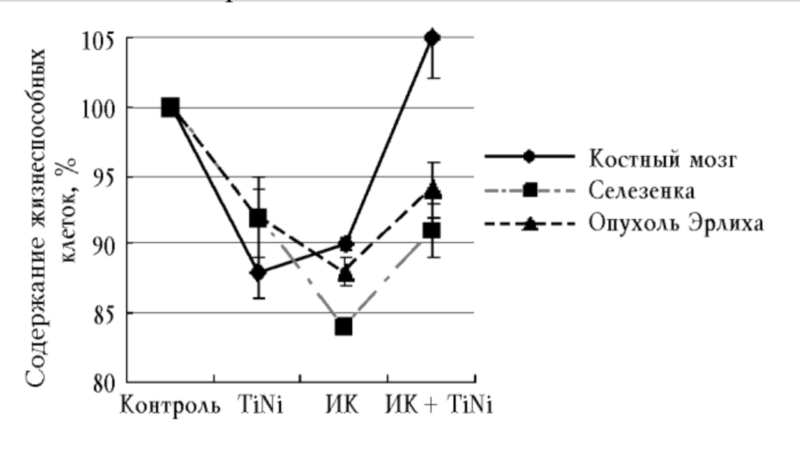
- Relief of muscular and vascular spasms;
- reduction of pain syndrome;
- release of biologically active substances, including histamine in the skin.
The overall effect of infrared rays is associated with a deep warming of tissues and is mainly reflexive in nature:
- increase in body temperature;
- Increases sweating;
- systolic and diastolic blood pressure decreases;
- tone of vegetative and sympathetic nervous system decreases;
- blood is redistributed in tissues and vessels (towards the heated area);
- the percentage of eosinophils in blood grows.
Some authors note an increase in the overall resistance of the body after a course of treatment with the Minin lamp. This effect is rather secondary, occurred against the background of the full rehabilitation after the underlying disease and is not directly related to the immunostimulatory effect of blue light.
How to choose the right one
The original design of the Soviet times implies holding the lamp in your hands, so the reflector must be provided with a protective heat-insulating edging along the edge of the lampshade.
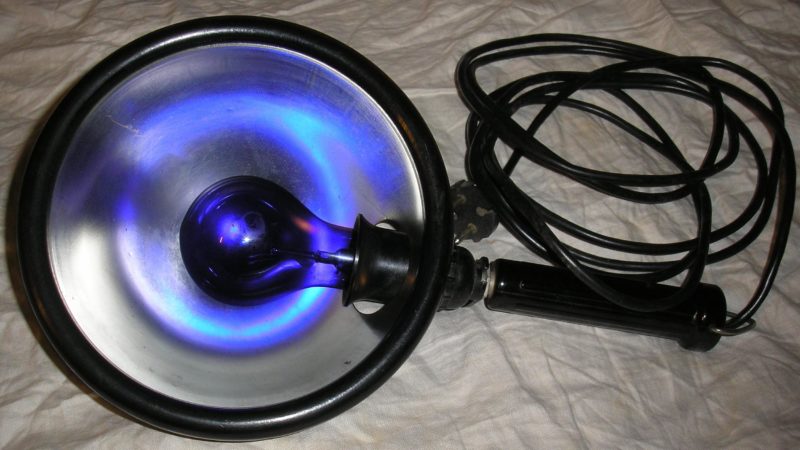
This border prevents burns if the edge of the reflector accidentally touches your skin.
In modern modifications this protection is rare, but some manufacturers make the handle bendable for the possibility of self-heating back.
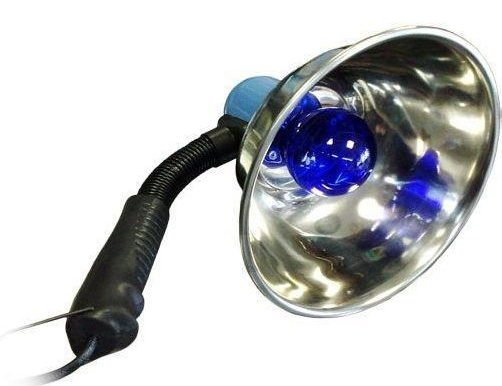
Some samples are made on the principle of a table lamp with a holder attached to the edge of a table, shelf or tripod.
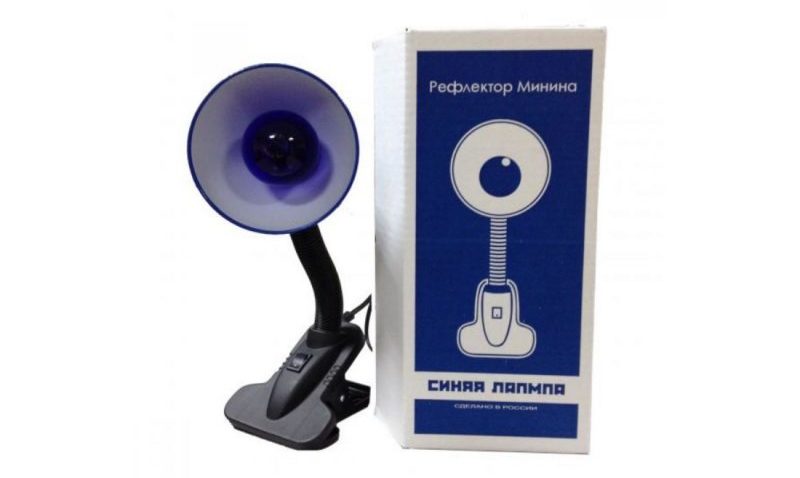
When choosing a device, the most important factor is the dimensions of the reflector. As the diameter of the reflector increases, the temperature of the irradiated surface decreases, but the surface area increases. The average diameter of the reflector is in the range of 180-200 mm and allows you to heat any area of the body. The light source must be blue. An ordinary transparent lamp will certainly warm up too. But even with all the contradictions, you should consider the effect of blue light, described by Minin himself, a practicing physician and honored surgeon. There are modern analogues that work with blue LEDs. The infrared spectrum of LED elements is insignificant, and the therapeutic effect is entirely dependent on the color of the glow.

Instructions for use
Before the session, check the integrity of the construction and insulation of the wire. The floor and furniture on which the patient is placed should be dry. It is desirable to exclude sources of noise and other irritating factors. It is possible to switch on music or audiobooks. The algorithm of application of the apparatus is as follows:
- The patient is placed in a comfortable position.
- The device is plugged in.
- The reflector is directed to the sick area of the body and placed at a distance of 30-50 cm from the skin surface.
- The distance and dosage of the irradiation are adjusted according to the patient's sensations. The heating of the skin should be comfortable, without a burning sensation.
- At the end of the session the device is unplugged.
You should avoid touching the reflector and the lamp during the session and 10 minutes afterwards until the heated elements cool down.
Please note! The Minin lamp is used only in cases where dry heat is indicated and only as an adjunct to the main set of treatments prescribed by the doctor.
Nose warming
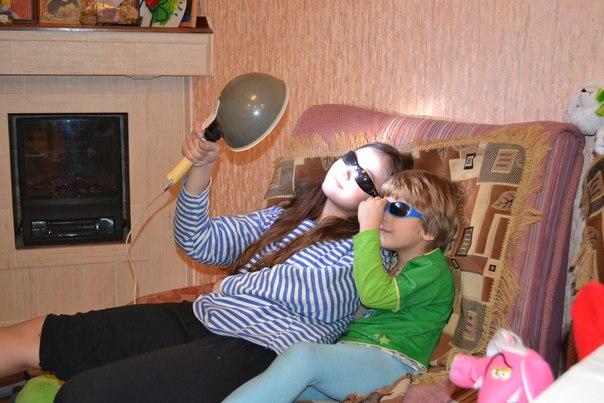
It is acceptable to warm the nose in cases of sinusitis - runny nose. To do this, a bandage is put on the eyes, and the reflector is directed to the nose area at a distance no closer than 20 cm. The number of sessions per day is on average 4-5 times with a duration of 20-25 minutes. The course of treatment is continued until the symptoms are completely gone. After heating the patient should not go out into the cold for 30 minutes.
Application for maxillary sinusitis
Modern guidelines exclude the use of heat for the treatment of diseases accompanied by accumulation of pus in the nidus of the lesion. This is due to the fact that in heat the reproduction of pus bacteria is accelerated, and if it is impossible to remove the purulent contents from the focus, complications arise, requiring urgent surgical intervention. In most cases, maxillary sinusitis has a bacterial etiology, and the use of the Minin reflex is possible only with complete patency of all sinuses. Since without a clinical examination it is impossible to find out this fact, and self-treatment with heat in this case is better to avoid.
Ear warming
Allowed for those cases where dry heat is shown. For example, in the treatment of mumps (mumps) blue lamp replaces the heating pad wrapped in cloth.
How to treat otitis media
The Minin Reflector is used to treat otitis externa and otitis media in cases where there is no discharge of purulent contents. To do this, the auricle is heated for 20 minutes 2-3 times a day, then on the ear is a warming bandage or scarf.
Important note! Inflammation of the inner ear at the initial stages runs without a discharge, but later accumulation of pus can damage the eardrum, depriving the patient of hearing. In this regard, the treatment of internal otitis media is allowed only under the supervision of a doctor.
Throat warming
Doctors prohibit the treatment of purulent angina, diphtheria and other infectious diseases accompanied by the formation of purulent plaque in the throat and swelling of tissues with heat. It is allowed to treat catarrhal angina, chronic and subacute tonsillitis with the blue lamp, provided that there are no violations of the thyroid gland. To do this warms the throat area by sessions of 20-25 minutes 3-4 times a day. After each session the throat should be wrapped in a scarf. Exit into the cold immediately after heating is also worth excluding.
Treatment of bronchitis
Blue light in the treatment of chronic bronchitis is used instead of mustard and cans. For this, the bronchial area (upper chest) is heated for 25-30 minutes several times a day and before going to bed, after which the patient is wrapped in a blanket for 1.5-2 hours.
From pimples
As an independent means from acne Minin device will not give any significant effect, because the ultraviolet range of the filament practically does not radiate. In the short term application of the lamp slightly dries the skin, improves microcirculation in the tissues. Prolonged exposure, on the contrary, leads to the activation of sweat glands, which is undesirable in such a pathology as acne. In this regard, it is recommended to irradiate the affected areas of dry and clean skin in short sessions of not more than 10 minutes.
Recommendations for use in children
To avoid burns and electrical injuries, children should not be trusted to use the blue lamp without adult supervision. In addition, the following instructions must be followed:
- the device is held by an adult throughout the entire session;
- The distance is adjusted according to the temperature of the area to be irradiated. The skin should not be hot to the touch and strongly hyperemic visually;
- A blindfold or cap is placed over the child's eyes;
- an adult makes sure that the baby does not catch the device with his/her hand or foot.
After turning off the hot reflector taken into another room to cool.
Contraindications
The action of concentrated infrared radiation is absolutely contraindicated in such cases as:
- cancer diseases;
- Thyroid gland pathology (local effects);
- Vascular disorders (in case of irradiation of vast areas);
- cerebral circulatory disorders (heating of the neck and head);
- Acute and purulent inflammatory processes (local);
- varicose veins (local effect);
- pregnancy - Do not irradiate the abdomen area..
Hyperemia (redness) of the heated skin area - in general, the phenomenon is not dangerous, but patients with impaired thermoregulation and heat perception should use the device with extreme caution. All instructions are recommendations, and the Minin lamp should be used only with the approval of the attending physician.
This video will help you make a Minin Reflector or Blue Lamp for warming up areas of the body with dry heat at home.
